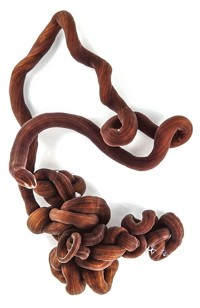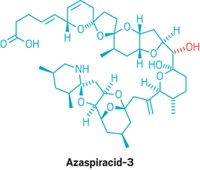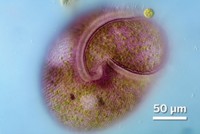Advertisement
Grab your lab coat. Let's get started
Welcome!
Welcome!
Create an account below to get 6 C&EN articles per month, receive newsletters and more - all free.
It seems this is your first time logging in online. Please enter the following information to continue.
As an ACS member you automatically get access to this site. All we need is few more details to create your reading experience.
Not you? Sign in with a different account.
Not you? Sign in with a different account.
ERROR 1
ERROR 1
ERROR 2
ERROR 2
ERROR 2
ERROR 2
ERROR 2
Password and Confirm password must match.
If you have an ACS member number, please enter it here so we can link this account to your membership. (optional)
ERROR 2
ACS values your privacy. By submitting your information, you are gaining access to C&EN and subscribing to our weekly newsletter. We use the information you provide to make your reading experience better, and we will never sell your data to third party members.
Analytical Chemistry
Algal Toxin Breaks Ring Record
Natural product has 17 contiguous polycyclic ether rings—the most of any marine algal toxin
by Journal News and Community
March 12, 2012
| A version of this story appeared in
Volume 90, Issue 11
In 1998, a red tide algal bloom blanketed parts of the southern coast of New Zealand’s North Island. An algae species, Karenia brevisulcata, in the bloom spewed toxins that killed most fish in Wellington Harbour and caused respiratory problems in more than 500 people nearby. Scientists had previously isolated groups of toxins from this species, but the large size of many of the molecules made structural determination difficult. Masayuki Satake of the University of Tokyo and his colleagues have now determined that one of the toxins, brevisulcenal-F, has 17 contiguous rings, making it the longest polycyclic ether system of any marine algal toxin (J. Am. Chem. Soc., DOI: 10.1021/ja212116q). The chemists isolated brevisulcenal-F by passing algae extracts through several rounds of chromatography, picking the fractions that killed mouse leukemia cells. They then determined the molecule’s structure using two-dimensional NMR to resolve the many overlapping signals. To confirm their NMR data, the researchers used tandem mass spectroscopy. Brevisulcenal-F’s 17 contiguous ether rings surpass the structure of the previous record holder, gymnocin-B, which has 15 fused rings.






Join the conversation
Contact the reporter
Submit a Letter to the Editor for publication
Engage with us on Twitter